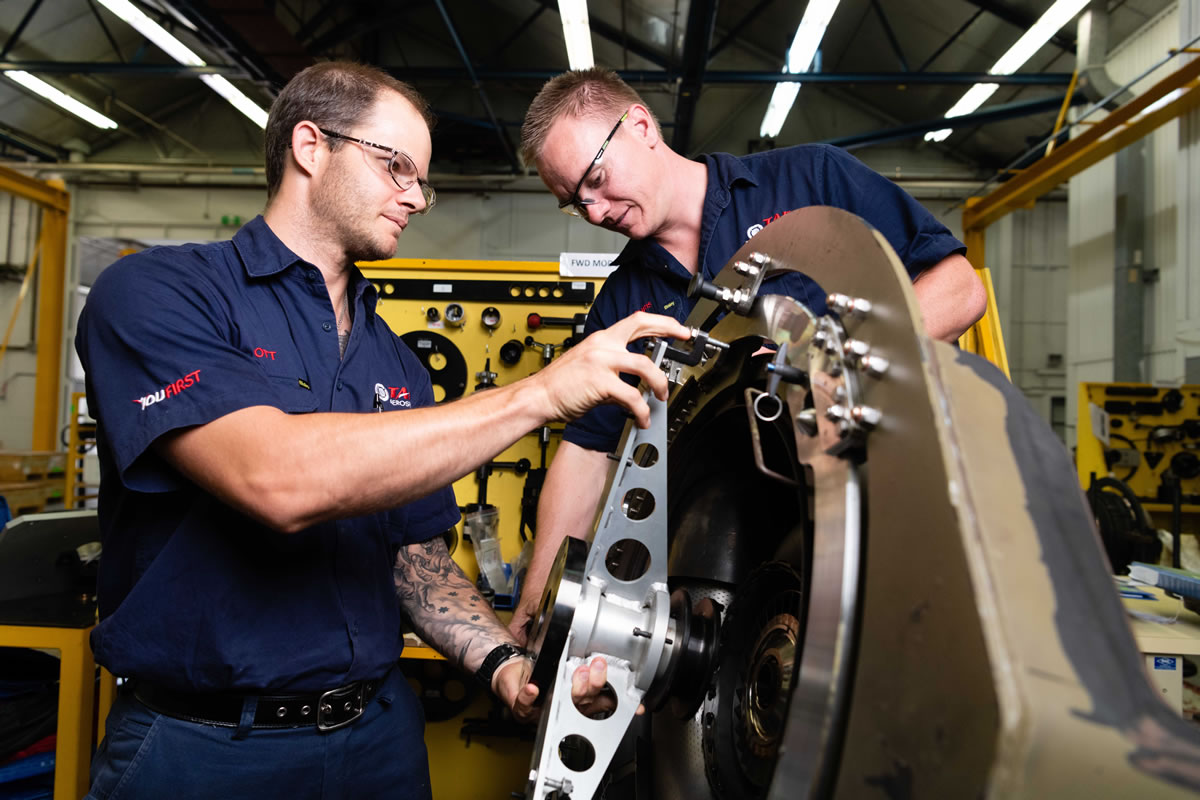26 May 2021
Aerospace MRO expands support in Land domain

Sharing MRO expertise and facilities between Air and Land platforms provides economic and operational benefits to Defence. TAE’s CEO, Andrew Sanderson, explains how.
Q: TAE Aerospace is generally associated with support for RAAF aerospace platforms.
When did the company become active in the Land domain?
A: Our land activity has grown over time and is now 15% of our business. We currently support 80% of Army combat vehicles with propulsion and fire protection system maintenance, repair and overhaul (MRO).
On the propulsion side, we were able to apply our Air Force knowledge and experience to the Honeywell AGT1500 – the aerospace engine that powers the Abrams main battle tank.
In 2013, Army was experiencing low engine availability with no in-country support. We had little in the way of AGT1500 tooling or equipment but, using our ingenuity, managed to recover 22 previously unserviceable engines for operational use at about 5% of the price Army traditionally paid. Based on the success of this activity, we co-invested in a full overhaul capability for the AGT1500 in Australia to establish a sovereign MRO capability for the engine.
On the fire protection side, we were fortunate to inherit a fifteen-year relationship with Army when we purchased Kidde Aerospace & Defence Australia (KADA) in 2018. We’ve continued to grow that relationship as the Australian partner for Kidde Automatic Fire Extinguishing Systems (AFES).
Q: What platforms and systems does TAE Aerospace currently support for Defence?
A: Our support is focused on MRO for propulsion, fire extinguishing systems and wheels and brakes for Air and Land platforms.
For Air Force, we support the engines of the F/A-18A, F and G, F-35 and Hawk 127, wheels and brakes for the C-27J, C-130J and KC-30, fire protection systems for the F/A-18, C-27J, C-130J, C-17, AP-3C and E-7A, as well as test cell sustainment.
For Army, we support the AGT1500 engine, EMFS and Oil Pump for M1A1 Abrams and the FADEC system for the MRH90 and ARH Tiger helicopters. We also support fire extinguishing systems for the MRH90, ARH Tiger, CH47, M1A1 Abrams, Hawkei, Bushmaster, ASLAV and M88A2 Hercules. We provide Engine Health Monitoring and test cell sustainment for the M1A1 engine as well.
Q: What synergies or benefits are achieved by providing MRO support across platforms?
A: It gives Defence a single Australian Centre of Excellence for both propulsion and fire protection MRO. A number of benefits flow from that. The consolidated investment allows key MRO-related assets to be used more productively, with a broader scope of capability and output across multiple platforms. This results in a more robust local provider with increased financial strength and ability to co-invest. It also gives us surge capacity so we can increase our throughput to match increases in volume.
With a larger workforce we can create cross-training opportunities. Our size gives us the ability to train apprentices to high standards across multiple engine types to provide the best sovereign industry capability. Importantly, the more work we do for Defence across the joint services, the better we understand the Defence customer and their pain points. We can then apply the ingenuity and the talent of our people to develop solutions.
Other benefits to consolidation are a simplified regulatory and compliance structure for Defence, and reliable access to OEMs and data through a strong Australian company.
Q: How does Army benefit from using an aerospace company for MRO?
A: The main benefit is access to our 500 years of combined aerospace MRO experience. By trusting us to look after their engines, Army gains the significant reliability advantages of a TAE-built engine. Engine reliability and availability improvements over time have allowed Army to reduce their engine fleet by more than 20% to lessen the logistics burden and cost. It also means Army has access to a full engine MRO capability. We can leverage all our services to support them, and they benefit from economies-of-scale for their fleet, despite the relatively low engine numbers.
Q: The importance of a well-maintained propulsion system is clearly understood. Fire protection systems are probably less considered. What does Defence require from its protection MRO provider?
A: Strong OEM links are important for access to materials and data, along with the licenses needed to handle and process the materials. An aerospace-quality system is also important. Kidde systems are used in the majority of military ground vehicles around the world, and currently in every Army vehicle fitted with an AFES. They are also fully interoperable with the US Army and USMC platforms. Our 15 years of in-country experience means we understand Australian safety and environmental requirements and can ensure full compliance for Defence.
Q: What is the future of TAE’s support in the Land domain?
A: In the near future, we’re planning to provide engineering and propulsion sustainment for the M1A2 Abrams and associated vehicles. We are also looking to integrate the engine and transmission system in the Abrams in partnership with Penske Australia. This means we’ll operate as the lead for the combined system, looking after the Full Up Power Pack for the tanks. We’ll also further develop our innovative Health and Usage Monitoring System (HUMS) for engines and transmission as well as provide other support systems on the tanks.
For Land 400 Ph 2 and Ph 3, we will support the Kidde AFES on the platform and extend our long-term partnership with Honeywell to also support the TALIN targeting and navigation system. Looking further toward the future, we will continue to expand our support in the Land domain worldwide – particularly in the US and parts of the Middle East that operate military ground vehicles in common with Australia.